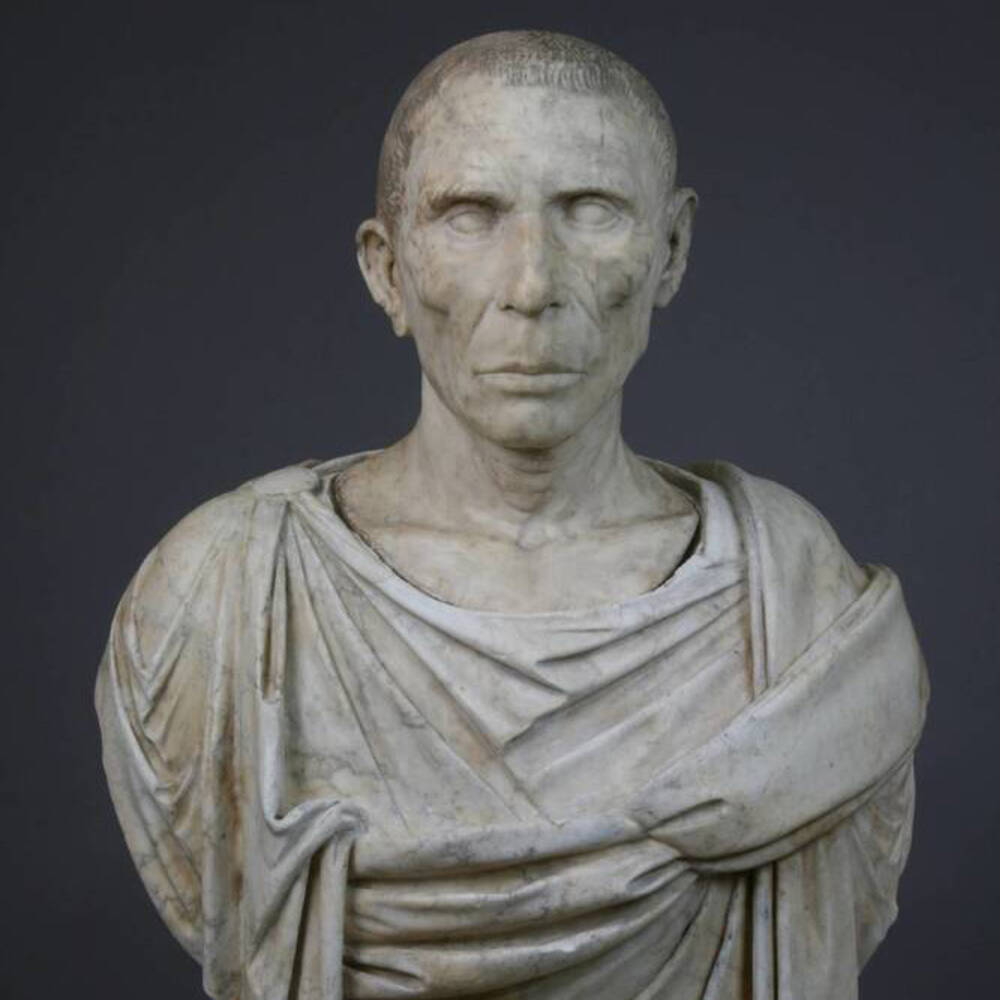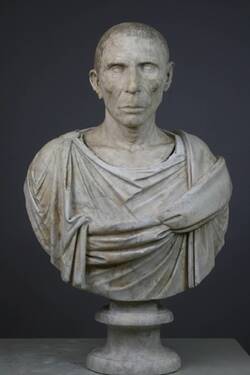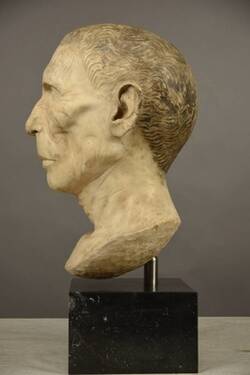The cheeks are completely sunken in the wrinkle-ridden face of an old man. One perceives the skull beneath the thinning skin, senses the fatigue of the deep-set eyes and believes to recognise a past sensuality behind the tightly closed lips. The short but still full hair is structured by crescent and wavy indentations and lies cap-like over the head. The haggard impression of the bony face is reinforced by the prominent collarbones and the deeply sunken choke pit. Nevertheless, we are not dealing with a depiction of loss of strength, weakness or infirmity in this portrait. Rather, the portrait radiates resilience and ascetic hardness. These virtues were characteristic of members of the Roman middle class in the early imperial period and an expression of their social advancement and social participation. Self-discipline, constancy and old age were positive values for this man and his relatives, which contributed to the success of the family and were immortalised in the portrait. The placement of the sculpture at the grave was a visible reminder of this for everyone. The semi-circular neckline shows that the portrait was originally made to be inserted, presumably into a toga statue.
Further Media




In the Roman Republic, wax death masks were extremely common. In the homes of rich patricians, death masks were hung in an ancestral hall together with a drawing of the family tree. Bombastic and extravagant funerals did not only celebrate the deceased, but also paid tribute to their ancestors. At such events, written sources report, actors wore the painted death masks of ancestors. Complete with hair and glass eyes, the masks appeared very much alive. The death masks also had a status function. The more prominent figures and dignitaries a family could number among their ancestors, the greater their respect and influence in the state.
Ultimately, the search for this man’s identity was not successful, but the comparison with other likenesses brought a very different insight. Other portrait heads also have similar faces with exactly the same characteristic creases and wrinkles. So despite such a seemingly individual appearance and an original inscription unequivocally identifying the persons portrayed, the portrait heads’ signs of age do not so much indicate a particular person as a particular type – a group of people. Scholars believe these are portraits of members of the new ambitious middle classes in the late Roman Republic and early Roman Empire, the descendants of freed former slaves who had climbed the social ladder through their own efforts and achieved rank and respect.
- Location & Dating
- End of 1st century BC - beginning of 1st century CE
- Material & Technique
- Marble
- Dimenions
- Gesamt: H: 42,0 cm, B: 21,5 cm, T: 22,5 cm
- Museum
- Skulpturensammlung
- Inventory number
- Hm 329